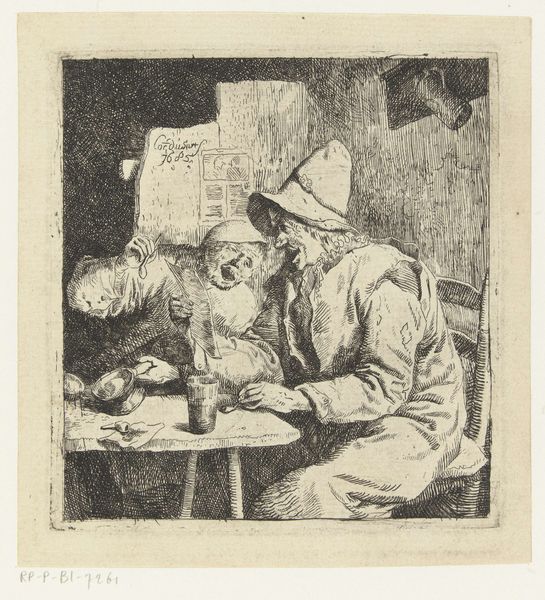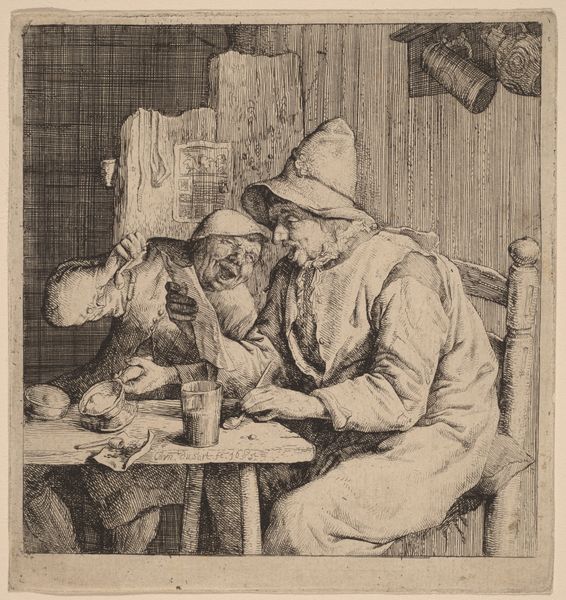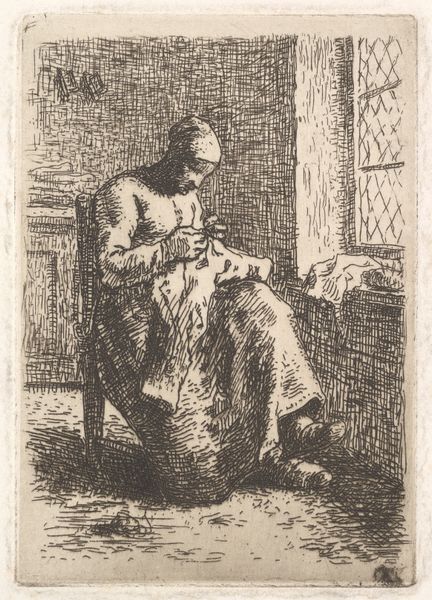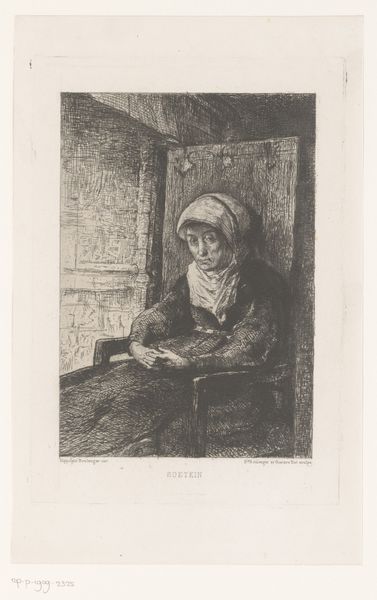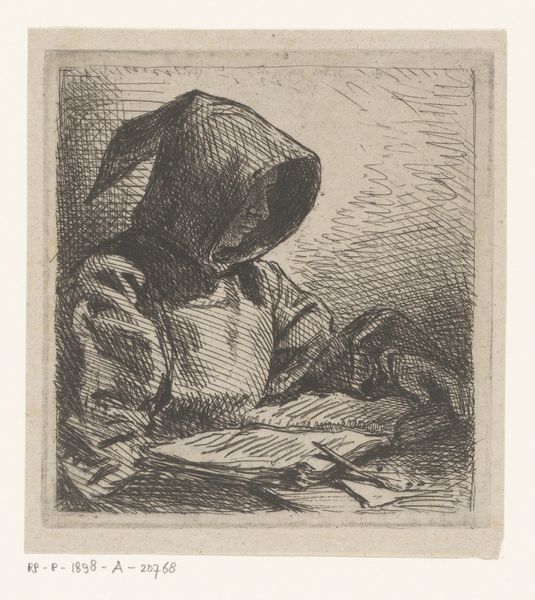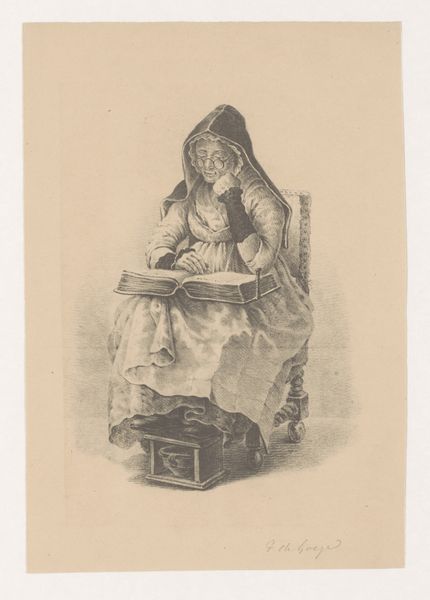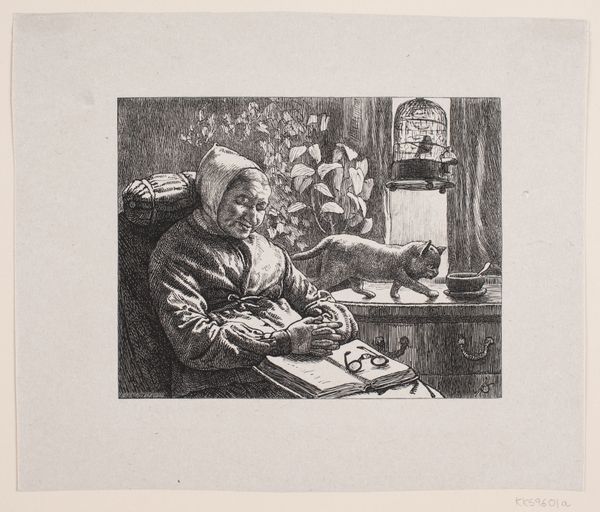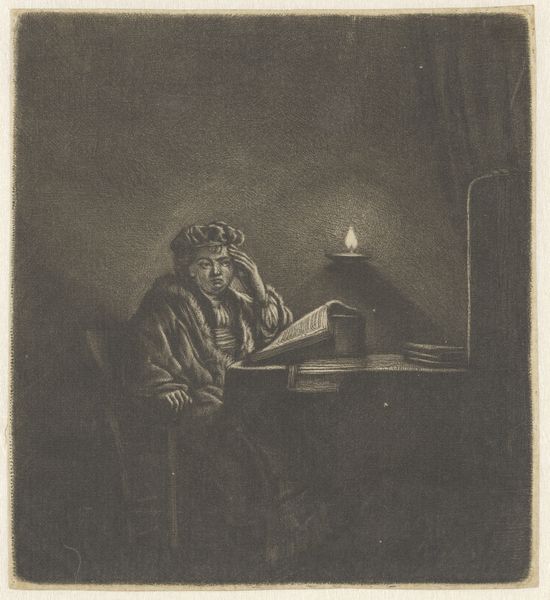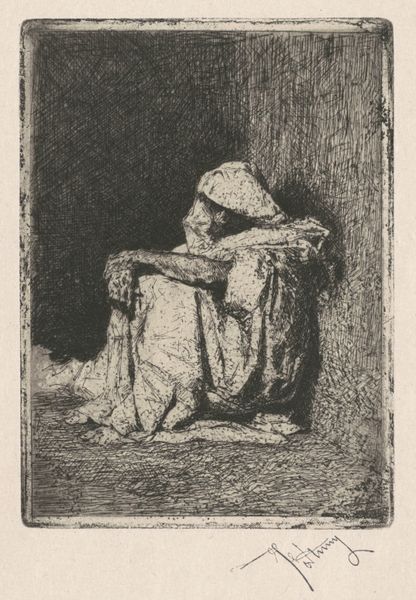
drawing, print, engraving
#
portrait
#
pencil drawn
#
drawing
# print
#
pencil sketch
#
charcoal drawing
#
pencil drawing
#
portrait drawing
#
genre-painting
#
northern-renaissance
#
engraving
#
realism
Dimensions: 438 mm (height) x 314 mm (width) (bladmaal), 116 mm (height) x 105 mm (width) (plademaal)
Editor: This is Anna Ancher's "Reading Old Woman," made in 1896. It's a print, an engraving, and it strikes me as a really intimate, almost solemn portrayal. It feels very... human. What do you see in this piece, especially thinking about its historical moment? Curator: Well, looking at this engraving through a historical lens, I find it interesting to consider its context within late 19th-century Danish society and Ancher's position within the Skagen artist colony. How do you think Ancher’s depiction of an elderly woman challenges or reinforces existing societal perceptions? Editor: That's a great question. I guess, initially, I see a quiet dignity in this woman's private moment. Often, images of older women at the time focused on the decorative or domestic, but this feels like it gives her intellectual life weight and importance. Curator: Precisely. It challenges the purely domestic role often assigned to women, especially elderly women, in art and society. How might this intimate portrayal serve to democratize the image, giving voice and visibility to those often overlooked in grand narratives? Think of this in terms of the rise of social realism. Editor: So, the very act of depicting this ordinary woman with such care becomes a subtle political statement? Highlighting her inner life gives her a kind of agency, regardless of her social standing? Curator: Exactly! And it's important to remember Ancher was operating in a male-dominated art world. Do you think her gender played a role in how she approached this subject? Might she have had a different perspective than a male artist depicting the same subject? Editor: That's definitely something to consider. Maybe a male artist would have approached this with a kind of romanticism that Ancher avoids, focusing instead on quiet observation and a sense of shared humanity. I've never thought about that before. Thank you. Curator: It’s a constant process of re-evaluating art based on societal structures and their politics. Looking at art through that context certainly shapes one's view, for me anyway!
Comments
No comments
Be the first to comment and join the conversation on the ultimate creative platform.
